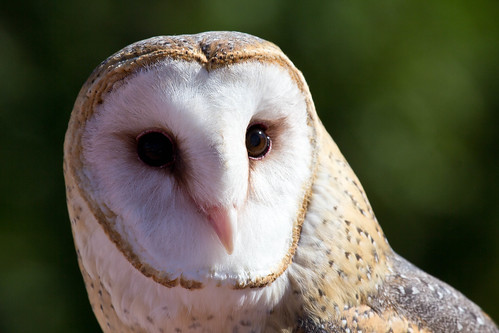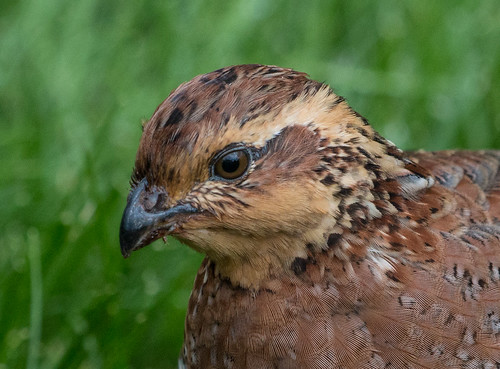In 1987, Bob Janssen updated that book with his 352-page Birds in Minnesota. And finally, in 2020, he’s updated that with a 584-page full color edition: Birds in Minnesota, Revised and Expanded Edition. All three iterations have been published by the University of Minnesota Press.
I was certain I would love Bob Janssen’s long-awaited book just as much as I’d loved the previous two editions. Just after I ordered it, I suddenly and urgently needed current information about the Barn Owl (I'd seen one in the bog last week), and so that was the first species I checked out. And WHOA! He has it in the wrong family! The Barn Owl is the only North American owl belonging to the family Tytonidae. Unlike the typical owls belonging to Strigidae, members of the Barn Owl family have unique heart-shaped faces and proportionately smaller eyes. Their inner toe, which is as long as the middle one, has a pectinate claw like nightjars, and their sternum has two notches and is fused with the furcula. Both these old-fashioned structural differences and also the more modern DNA differences support keeping the Barn Owls in a separate family from typical owls.
 |
| Typical owls, such as this Barred Owl, belong to the same order (Strigiformes) as the Barn Owl, but belong to a different family. |
A few other species are the sole representatives of their families, at least in Minnesota. Of them, the Osprey, Horned Lark, Brown Creeper, Blue-gray Gnatcatcher, and European Starling are all put in the correct families, but several other birds are misplaced. The Northern Fulmar, Wood Stork, and Magnificent Frigatebird are all placed in Gaviidae, the loon family; the American Dipper and Northern Wheatear are put in Regulidae with the kinglets; and the Yellow-breasted Chat is placed with the blackbirds. That one is a little understandable—the true blackbirds belong to Icteridae while the chat belongs in Icteriidae. But the book clearly states that “The nomenclature, sequence, and taxonomy used in this book are in accordance with the seventh edition of the American Ornithological Society’s Check-list of North American Birds (1998) and incorporates changes through the fifty-eighth supplement (July 2017).” Any copyeditor should have caught these obvious errors, especially in a book published by the University of Minnesota Press.
Paying close attention to the families made me notice something else that seemed strangely off—they used the same generic songbird silhouette at the top of every family section. A sparrow-type bird setting off sections about ducks or loons or herons seems bad enough, but a songbird depicting a section about owls, hawks, or falcons that eat sparrows seems genuinely inappropriate. If the designers wanted to use the same simple graphic for each family section, they should have selected something else—a simple squiggle would have done the trick.
I ran into other irritating errors that should have been caught by any copyeditor. The Piping Plover entry says it’s “an rare spring migrant,” the kind of error even Microsoft Word picks up. And the photo credits are alphabetized by the photographers' first, not last, names, with the species listed under each photographer taxonomically. If you simply wanted to know who took that splendid photo of the Harris's Sparrow, you'd have to go through all the photographers' names, and the species listed under each, all the way to the T's to find Terry Johnson's name. It's rare to find a publication nowadays that doesn't list the photographers' names in tiny print along the side of each photo. And again, in what alternate universe do they alphabetize people's first names?
With regard to the photos, the information in the two previous iterations of the book didn't require photos, and I don't think they really strengthened this one in any way except to make it prettier. And if photos had to be included, many of them deserved more of a caption than simply the species name. The charming Winter Wren photographed by David Brislance is a young fledgling; someone unfamiliar with the species might have thought the yellowish gape and extremely short tail are typical of adults. And Andrew Nyhus's lovely Black-throated Blue Warbler is a female. Someone unfamiliar with that species would certainly wonder how it got its name. These were great and appropriate photos, but deserved a bit of an explanation.
A lot has happened in the 88 years since Roberts's Birds of Minnesota was published, including the loss of some species. Some had disappeared even before that. Roberts included an entry on the Trumpeter Swan even as he noted that they'd disappeared from the state decades before. Roberts knew a comprehensive book about the state's birdlife had to include every species found in the state, past as well as present. Janssen of course includes the Trumpeter Swan in this edition, noting, "What a great success story for this magnificent species."
But Janssen isn't so conscientious about including species that disappeared more recently. The Northern Bobwhite is listed in T.S. Roberts’ book and both earlier iterations of this one, but this time around, it’s simply dropped. It may have been absent in pre-settlement times, but there were many successful introductions up until 1952 and it's still found in surrounding counties in Wisconsin and Iowa. In Janssen's 1987 book it's listed as "regular, permanent resident," wild birds breeding in five counties. Suddenly the MOU is no longer accepting sightings even in those counties, but no explanation is given.
To this day, people sometimes see bobwhite in Minnesota, and not just where their last stronghold was—I photographed one right across the street from my house in 2014. I happen to know there's a retriever training club not far from here, from which bobwhites sometimes escape. And I realize that the numbers in Wisconsin and Iowa may well have been augmented by introductions and escaped birds rather than being genuinely natural, but it would have been valuable for readers who come upon a bobwhite somewhere in the state to be able to look up the species' status, wouldn't it? And people who remember that bobwhites were once found here and want to find out what happened ought to be able to read the answer in a "comprehensive" book about the state's birdlife. Unfortunately, Janssen dropped the species without explanation.
For diurnal raptors, Janssen includes the yearly average seen at Hawk Ridge, the maximum seen in a single year, and the high daily counts. But considering how many decades of data we’ve amassed, isn’t it time he mentioned each hawk species’ count trends? Some of our raptors have increased wonderfully, like the Bald Eagle, Peregrine Falcon, and Merlin, but you’d never know from the text that the American Kestrel has declined dangerously throughout the entire country as well as within Minnesota unless you happen to notice the tiny graph from the Breeding Bird Survey. Janssen sums up the kestrel's status in the state as, “Regular. Migrant and summer resident. Uncommon in winter,” and doesn't mention anything about its mystifying disappearance anywhere in his text.
Maps showing the nesting and summer range of each species are solid green with a dot in counties with confirmed nesting, the dot getting darker with increasing number of nesting records. But some counties are much larger than others, making the dot system pretty confusing and messy. It was a fine system when these same maps were originally developed, in black and white, in 1975, and not too bad in 1987, but by 2020, in a full-color book with the graphics allowing much finer detail, I wish Janssen would have used our state’s Breeding Bird Atlas maps, which show a lot more nuance and include far, far more valuable, current data. And even his other maps are not detailed enough. There is a single record, from 1997, of a Burrowing Owl in Duluth, but all of St. Louis County is colored on that species' map. This huge county is larger than four states, so showing that enormous swath of gray seems graphically misleading.
When I bought my copy of this book, it was to keep my library current, so I don’t regret the purchase. But $34.95 is pretty pricey for people who simply want to know more about the state’s birds. Last I heard, the University of Minnesota Press will eventually be publishing the state’s Breeding Bird Atlas in book form, and if that work is anything like that project’s amazing website, it would be well worth double what this book cost.
I really wish the updated Minnesota Birds lived up to my expectations. I hardly ever write negative reviews of books—I know there are important things I may have missed or didn't properly appreciate about a work, and overall, it seems more useful to promote books and projects I do like than to attack ones I don't. But this book, published by a prestigious university press, stating on the cover that it is "authoritative" and "comprehensive," and "indispensable" for "birdwatchers in Minnesota, both amateur and professional," is simply not reflective of the best information we have about Minnesota birds in 2020. I can't come up with a single question about Minnesota birds that is answered in this book that isn't answered at least as completely, for free, online at eBird.org or mnbirdatlas.org.






